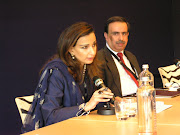It's
an interesting coincidence that Prime Minister Narendra Modi's visit to Japan -
his first bilateral trip outside the subcontinent - is being followed so
quickly by the arrival in India of Australia's Prime Minister Tony Abbott.
Like
Modi and Prime Minister Shinzo Abe of Japan, Abbott represents a right-wing political
constituency, has a spare, no-frills style and has made economic diplomacy and
a clear-headed approach to China's ascendancy central to his foreign policy.
Few countries in the region have more in common today, both in values and
interests, than India, Australia and Japan.
Abbott
is building on a bipartisan legacy. India and Australia have had a growing
relationship since John Howard and Atal Bihari Vajpayee took the initiative a
decade ago.
More
recently, the UPA government sent a series of ministers Down Under. It was a
Labour Party PM, Julia Gillard, who made the effort to change party and
national policy and called for selling uranium to India. An agreement on nuclear
commerce will probably be finalised by Abbott and Modi.
It is not as if the
relationship has been without hiccups.
Australian
over-reaction to India's Pokhran II tests in 1998; Kevin Rudd's swashbuckling
but ill-fated swerve to China as PM, and his initial snubbing of India; the
violence against Indian students in Melbourne in 2009; India's economic decline
in the past few years: all of these led to the India-Australia partnership
delivering below potential.
Yet,
this is an opportune moment. In November,Modi travels to Brisbane for the G-20
summit and could follow it up with a bilateral visit, the first by an Indian PM
since 1986.
The
tensions of 2009 are a thing of the past and India constitutes the largest
source of skilled migrants to Australia, having supplanted China in 2012. The
scope for business is enormous. Energy security is a key thrust of Modi's
international engagements and Australia has coal and gas to offer, as well as
uranium as and when India's nuclear plans firm up.
Mining,
as finance minister Arun Jaitley has pointed out, is critical to the government
as a driver of growth and employment. Here again, there is place for Australian
expertise.
With
the hope of legislation to end Coal India's monopoly and permit merchant
mining, there will be room for Australian mining conglomerates. Of course, this
may require a shift in orientation. Some Australian resources giants, such as
BHP Billiton, have been keener to export to India, rather than get their hands
dirty in actual mining operations.
In
the Modi era of 'Come, Make in India', this may not go down well. To be fair,
others like Rio Tinto and Hancock have demonstrated interest in collaborating
with Indian partners.
Education
and skill development is another vast sea waiting to be explored. The
University of Melbourne, for instance, rated consistently in the top 40 in the
world, got no more than 17 undergraduate students from India at the beginning
of this academic year.
This
should change. When it comes to skilling and vocational education, Australian
institutional advantages can fit well with New Delhi's ambitions of equipping a
young population for jobs, as evident from the setting up of a separate
department of skill development.
Beyond
economics, there is politics. Two decades ago, India's 'Look East' policy was
constructed around an outreach to the Asean bloc, with Japan and Australia
viewed as a second tier, to be met using Asean-centric frameworks such as the
East Asia Summit.
Today,
Asean is a weaker collective. The ability (and willingness) of many of its
members to say 'no' to China has declined. Vietnam, the Philippines and, to a
degree, Indonesia remain among the last holdouts.
Given
this, India's quest for achieving regional balance - a polite, bland euphemism
for addressing the China question - will inevitably see it seeking arrangements
beyond the Asean combine, with individual South-east Asian countries, as well
as with Japan and Australia.
In
time, Abe, Abbott and Modi could emerge as the Indo-Pacific's AAM trilateral.
Co-authored with Ashok Malik
(Source: The Economic Times)






No comments:
Post a Comment